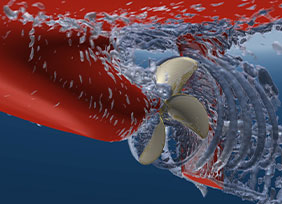CFD Modeling and Simulation
What is CFD Modeling and Simulation?
Computational fluid dynamics (CFD) models the flow of fluids using Navier Stokes equations, a set of five partial differential equations. These equations approximate fluid motion in a virtual environment using computer resources. CFD simulation enables predicting real-life scenarios using specific models that complement the physics of the application. The CFD modeling and simulation results are often validated using experiments or literature values.
CFD modeling and simulation serves automotive, aerospace, manufacturing, electronics, healthcare, and environmental engineering domains. In short, all the applications that involve fluids can be modeled and simulated using CFD tools. The multidisciplinary modeling, analysis, and optimization requirements are partially responsible for the widespread use of CFD modeling and simulation.
Why is CFD Modeling and Simulation important?
CFD modeling and simulation radically transform the design and manufacturing process.
CFD simulation can:
1. Reduce manufacturing costs
A significant application of CFD simulation is in the manufacturing industry. CFD modeling and simulation gives insights into how well a design model will reciprocate under extreme surrounding conditions before doing it in the real world.
2. Develop a design without expensive testing
In aerospace and many other industries, components are tested in a wind tunnel or experimented on for their performance. CFD modeling and simulation tools dramatically simplify this process by simulating a computer's design. Several iterations of a component are simulated without manufacturing them. On achieving an optimum design that matches the customer requirements and market standards, the manufacturing process is initiated.
3. Understand how a product will work without building it
CFD simulation is also an excellent way of prototyping products. CFD modeling and simulation tools can help understand if the assumptions about product performance are valid. The CFD simulation results are helpful visual representations for in-depth research and the study of different fluid-flow phenomena.
How does CFD Simulation work?
The CFD Simulation process
The CFD simulation process consists of 5 steps, explained briefly below:
Importing the CAD geometry
Every CFD simulation process involves importing a geometry model into the CFD software. The geometry is typically an assembly designed in a parametric 3D CAD program. Once imported, it forms the basis of your CFD modeling and simulation work.
Setting up domain
The next step is to assist the CFD simulation software with the fluid properties. Here, a user provides property inputs such as density, thermal conductivity, and viscosity—the more accurate your fluid properties, the better your CFD modeling.
Create boundary conditions
The next phase is to define the boundary conditions. These boundary conditions are typically needed to describe the fluid flow at the inlet and outlet of the model.
Analysis
In the analysis phase, the CFD modeling and simulation tool solves the partial differential equations based on the set parameters. The speed of a CFD simulation depends on the computer resources. Today, with parallel and cloud computing solutions, the time taken to complete a CFD simulation has been reduced from days to hours.
Optimize design model based on results
After completing the simulation, the data is run through various post-processing programs to visualize the fluid flow results as contours, streamlines, or streak lines, per user preference. Based on this information, the component is optimized to suit the design objectives.
CFD Modeling and Simulation with Cadence
Cadence Fidelity CFD is the end-to-end solution for all CFD-related applications. The dedicated tools within the Fidelity CFD environment can quickly and efficiently solve each simulation step. Furthermore, Fidelity CFD was designed with ease of use in mind, with an intuitive and application-driven interface through automated processes with a Python API and optimization module.
Cadence’s latest investment, Cascade Technologies, has a high-fidelity CFD solver that can resolve the most challenging turbulent flow problems. Rooted in physics fidelity and delivered through high-performance computing, the tools are predictive, fast, and cost-efficient.
